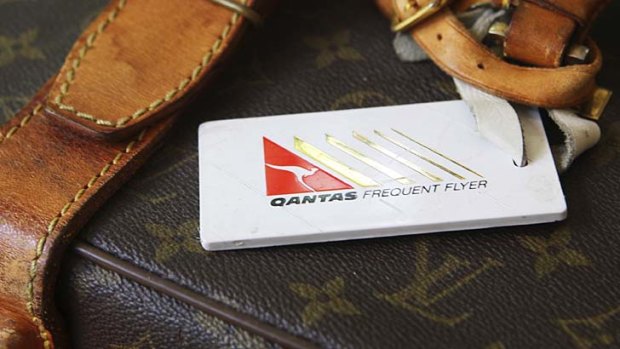
Reward schemes are one of the key battlegrounds in the war between Qantas and Virgin.Credit: Peter Braig
Frequent flyer programs are emerging as one of the key weapons in the latest stage of the battle for customers between Virgin Australia and Qantas.
On the one hand, Qantas is trying to hold the line with the vast reach of its international network, with many of its own planes flying key long-haul routes, while Virgin relies much more heavily on other airlines’ planes in a more complicated brand-switching exercise with its array of alliance partners.
Virgin Australia’s Velocity loyalty program, now with more than three million members, is beginning to achieve the critical mass to take on the Qantas Frequent Flyer program with more than eight million people on its books.
Because Virgin is on the make, it's easy for people to join Velocity, for which membership is free, while Qantas charges a fee. Consumers also report that redeeming points on Virgin is generally easier and cheaper than on Qantas.
However, the whole frequent flyer lurk changed forever about a decade ago when the concept of “free” flights was abolished with the introduction of “taxes and charges” having to be paid whenever a redemption was made. On a route like Sydney-Los Angeles, those fees could amount to a third of the cost of actually buying a discount seat without using frequent flyers.
As airlines including Qantas have periodically devalued points to reduce the airline’s contingent liability in unredeemed rewards, the past decade has also seen average fares paid (“yields” in industry lingo) go down and the average percentage of seats filled (the load factor) has had to rise to compensate. With load factors now in the 80 to 90 per cent range, that means there are fewer seats than ever allocated to frequent flyers.
Qantas went first with a further skewing of points values by introducing status credits where the more you fly and the more you (or your company) spends on air travel, the greater the rate at which you earn points.
It’s no surprise that a similar status program has been introduced at Virgin Australia, whose chief executive John Borghetti was the brains behind much of Qantas’s marketing when he was there.
“The true value of points is well disguised thanks to a complicated set of algorithms that the airlines use to determine how much status you earn from a flight, as well as how many points you burn through when using them,” Amanda Bryan reported in the Sydney Morning Herald earlier this year.
At the top end, Borghetti is even now talking of a Chairman’s Lounge-style “product” at Virgin to match the exclusive Qantas lounge network used to pamper high flyers in business and politics.
But at the bottom end, people trying to accumulate points travelling infrequently down the back of the plane and sticking with one supermarket brand to buy petrol and groceries are arguably being forced out of the game.
Someone in the airline business mused a few years ago that Qantas was becoming more like Virgin and Virgin was becoming more like Qantas.
But there’s one vital different: it still costs Virgin much less to put a bum on one of its seats than Qantas.
''If you get down that road where people think you can turn the market with lower fares or excess capacity, usually a lower-cost provider wins that game,'' Virgin Australia’s chief operating officer Sean O’Donohue said last week, warning Qantas of the consequences of a war.
''We are not interested in fare wars or capacity wars. If it does get to that state, we have a significantly lower cost base than Qantas. We think we have opportunities to even widen that gap further,'' he said.
Meanwhile, as Virgin cuts Qantas’s business class fares by up to 25 per cent in the first competition for corporate travellers since Ansett disappeared 11 years ago, one of the challenger’s key weapons, revamped last year in readiness for the battle now underway, is the sweetener it calls Velocity.
If you’re a regular flyer, have you found the frequent flyer programs have played a key role in either keeping you or turning you? Was it just the domestic networks and frequencies you were concerned with or did the competing international networks play a role? Was Virgin’s international network a strength or a weakness compared with Qantas? Have you found one program easier to use than the other?
Sign up for the Traveller Deals newsletter
Get exclusive travel deals delivered straight to your inbox. Sign up now.